How to Make Corned Beef
This post may contain affiliate links. Please read my disclosure policy.
If you’ve ever wanted to know how to make corned beef from scratch I’m here to take you step by step through the process. It all starts with a beef brisket that gets “corned” which literally means preserved, in a brine with a pickling spice blend and is then cooked until fall apart tender (watch the video and see)!
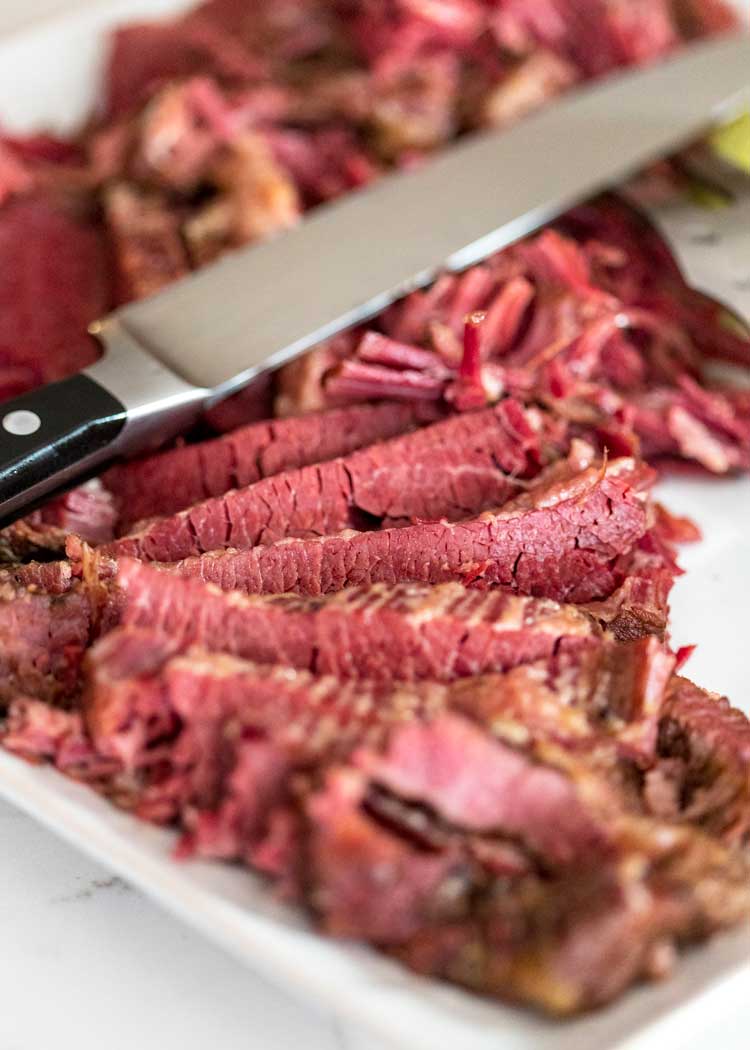
In researching this corned beef recipe I found the term corned started back when large corn sized salt rocks were used to preserve meat in barrels and crocks. Refrigeration wasn’t always around like it is today!
Corned beef is synonymous with St. Patrick’s Day and as a staple in any deli for one amazing sandwich. Tender, fall apart cooked slices of mouth watering meat with a slightly salty and sour touch punctuated with spices like dill, allspice, mustard seeds and more. I’m sharing with you my own Pickling Spice Blend, but feel free to use your own if you like.
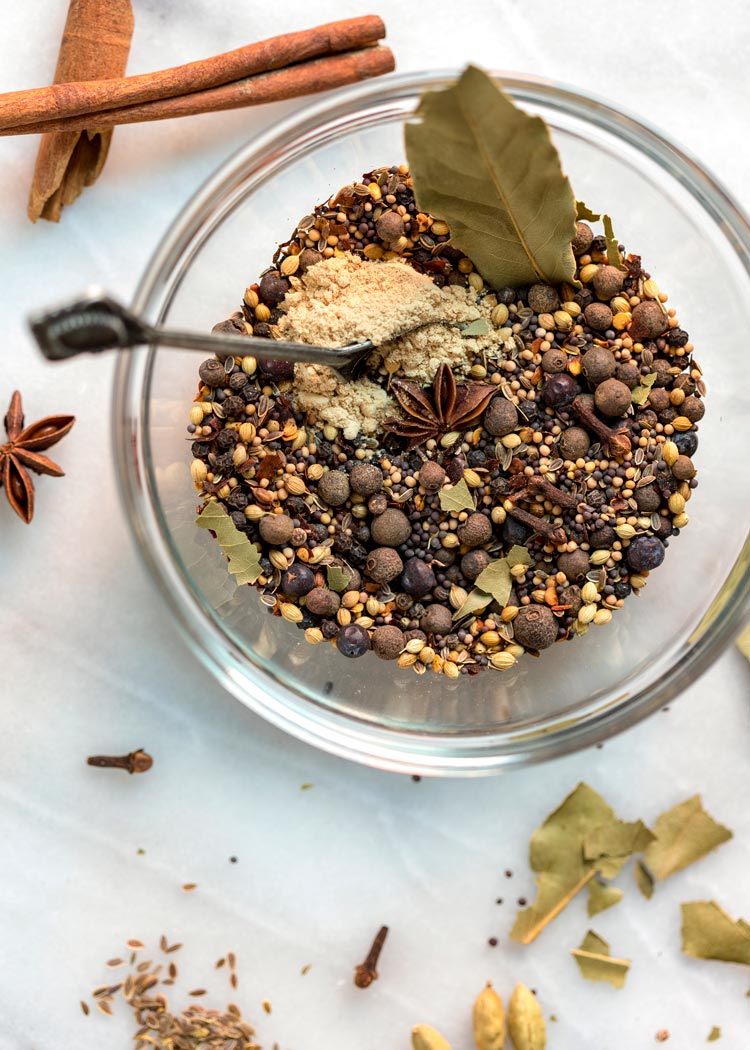
How to make Corned Beef
Have you ever wondered how corned beef was made or want to make your own homemade version instead of the pre-packaged ones that you can only pick up seasonally at the market or Costco?
It’s easier than you think! For my corned beef recipe all you really need is patience, as this beef brisket stays in the refrigerator in a pickling brine for 10 days. Plan ahead for this one. 🙂
Feel free to use a pre-packaged one already brined and just follow the cooking instructions, BUT dare I say, made from scratch, homemade is so worth it! Just plan your time wisely.
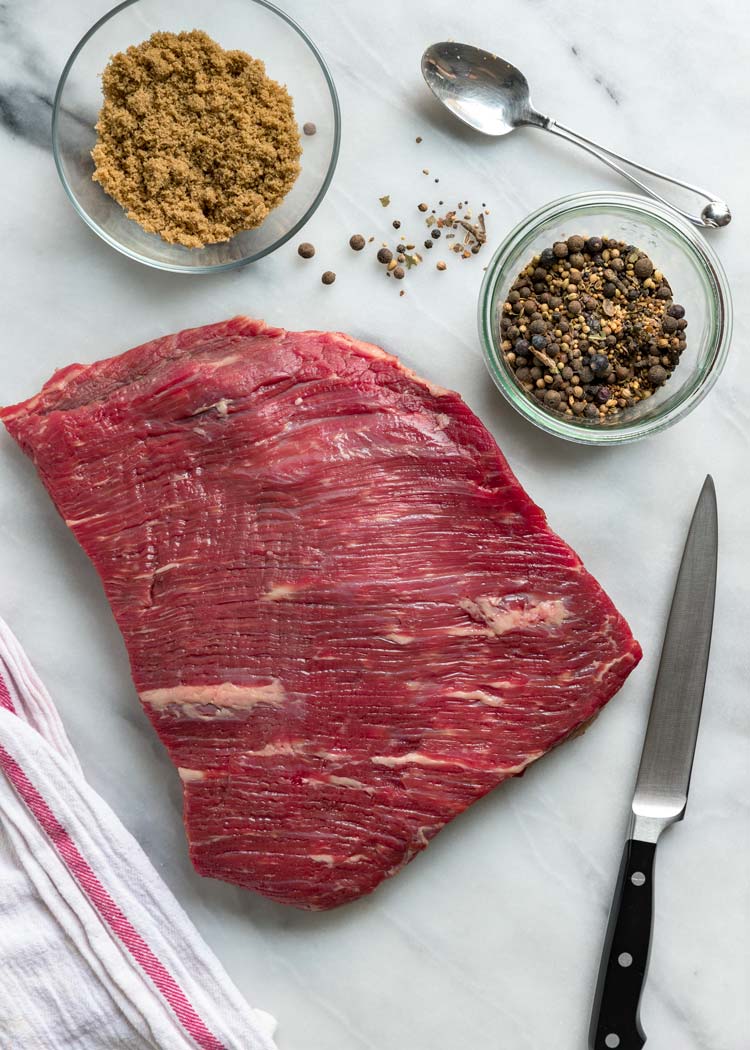
Is There a Difference Between Kosher Salts?
Yes, per Epicurious. Not all kosher salt is the same due to size and weight.
Because each brand employs different methods of production, the crystals are distinct in size and structure. What that means is that 1 teaspoon of Diamond Crystal is not the same measurement as 1 teaspoon of Morton kosher. DC’s crystals are larger, so it takes fewer of them to fill measuring spoons; 1 teaspoon of Diamond Crystal kosher salt weighs 3 grams. A single teaspoon of Morton kosher, by contrast, weighs about 5 grams.
A note on weights: 3 grams of coarse salt equals the same level of salinity as 3 grams of fine salt or 3 grams of flaky salt. So if a metric baking recipe calls for 3 grams of Diamond Crystal kosher salt, you can substitute with 3 grams of any salt you like.
To make it easier, Epicurious put together a salt conversion table (see below) outlining a few of the most common salt brands found in American grocery stores, including coarse sea salt, fine sea salt, and top kosher salt brands. Use it to decipher the correct amount of salt for any recipe whenever DC isn’t the brand you have on hand.
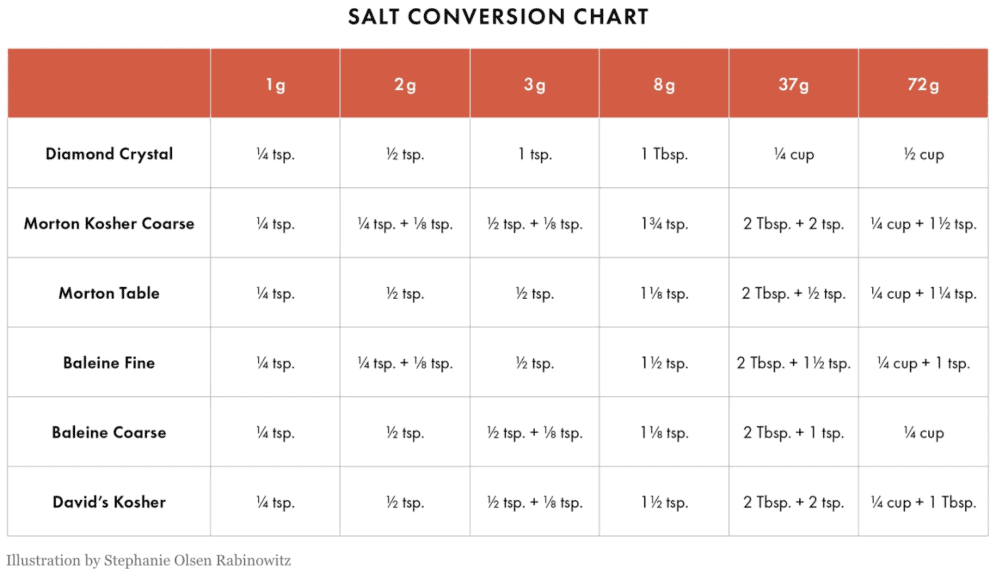
Pink Curing Salt
A key ingredient in the “corning” process is using pink curing salt. I’m not talking Himalayan pink salt either. This will be going in the brine, too.
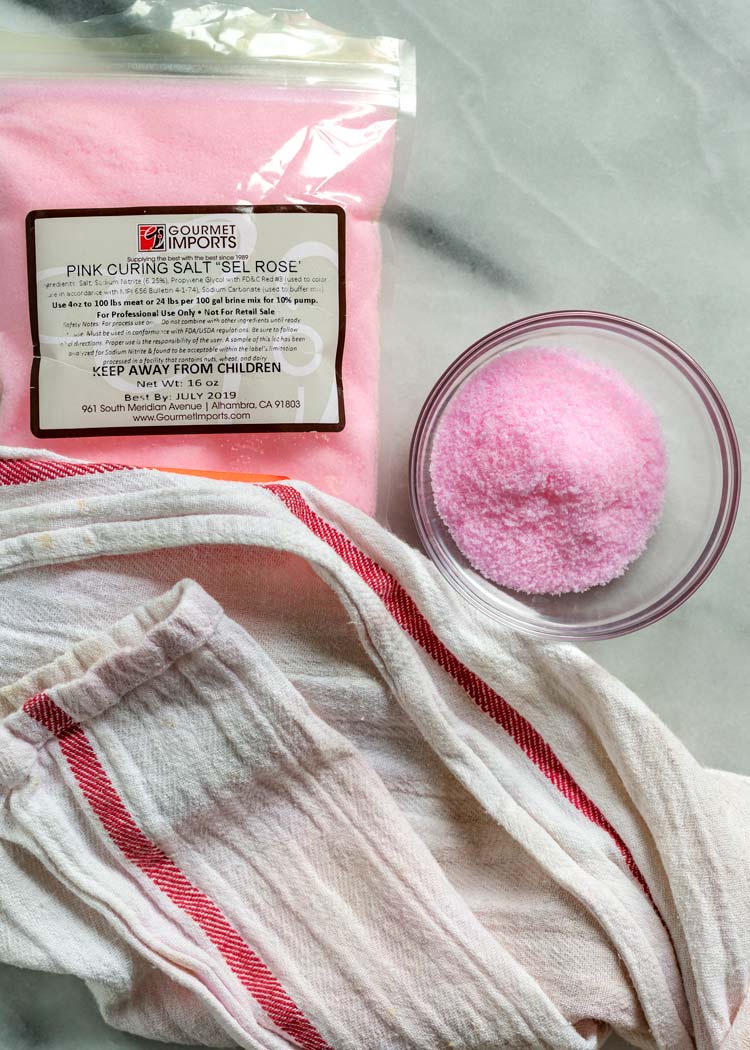
Pink curing salt is made using sodium nitrite (See recipe Note) that prevents food from going bad and spoiling while it’s being stored for a time. Curing salt is dyed that pink color so it’s not mistaken for everyday white table salt. If you can’t find at you market or via butcher, you can order online easily.
After that it’s cooked, sliced and served alongside carrots, potatoes and cabbage. It’s also great with mustard, sliced thin for sandwiches, or the hearty corned beef hash for breakfast or try my layered Corned Beef Casserole!
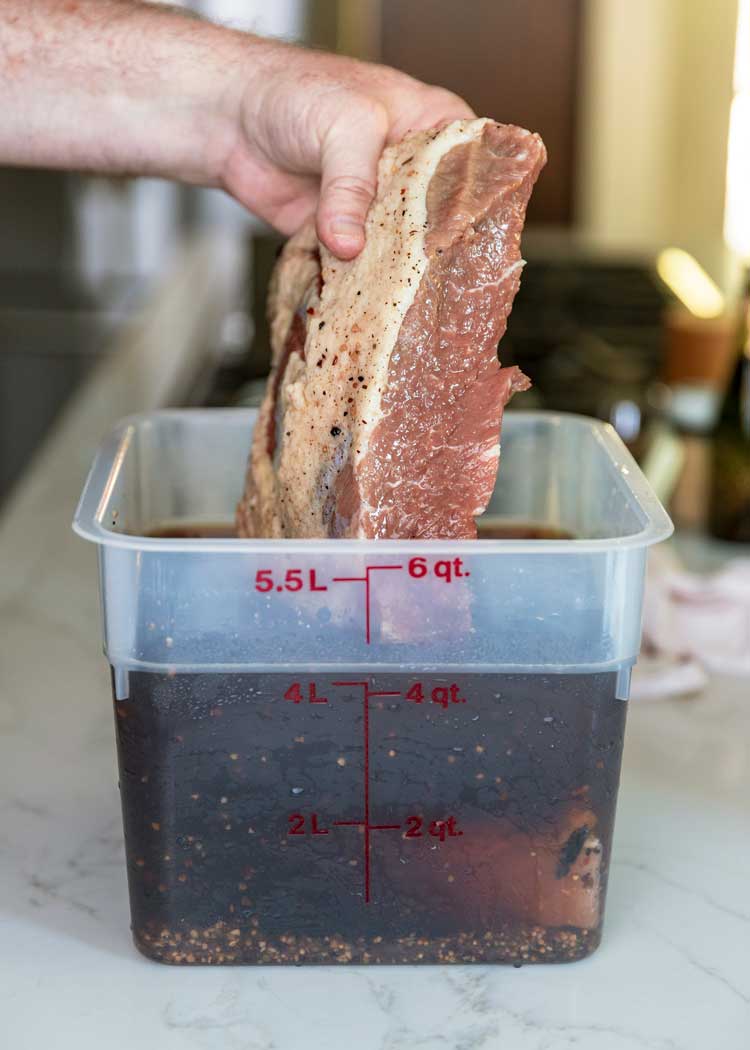
What’s the best cut of beef brisket?
It all starts with picking the beef brisket. There are several cuts so take note. I prefer the entire brisket that has both the point (the thicker end with fat marbling it) and the flat cut, while it’s flat and probably the one most used in pre-packed ones, is leaner. If you can get one from your butcher ask for the brisket that has both.
I’ll share with you how to make it on the stove top in a Dutch oven, the traditional way braised in the oven, in the slow cooker and also via the pressure cooker, better know today as the Instant Pot.
How to Cook Corned Beef?
Stovetop method: For a 5 pound brined corned beef brisket. Place the corned beef in a Dutch oven. Sprinkle with one tablespoon of pickling spice blend and pour in 4 cups beef broth. Add potatoes, carrots, and cabbage. Bring to a boil on high heat. Reduce heat, cover and cook for about 3 1/2 hours. Add water if necessary to keep brisket covered. Slice across the grain.
Oven Braised method: For a 5 pound brined corned beef brisket. Preheat oven to 350°F. Place the corned beef in a Dutch oven. Sprinkle with one tablespoon of pickling spice blend and pour in 4 cups beef broth. Add potatoes, carrots, and cabbage. Bring to a boil on high heat. Cover and cook in oven for about 3 1/2-4 hours until beef is cooked and tender. Add water if necessary to keep brisket covered. Slice across the grain.
How to Cook Corned Beef in an Instant Pot?
Instant Pot method: For a 5 pound brined corned beef brisket. Place the corned beef brisket, fat side up, on a rack. Sprinkle with one tablespoon of pickling spice blend and pour in 4 cups beef broth. Lock the lid in place, close vent. Select High Pressure and set or 90 minutes, with a natural pressure release, NOT a quick pressure release. Remove corned beef and cover with foil to keep warm.
Add potatoes, carrots, and cabbage to liquid in pot. Seal with lid and set to HIGH pressure for 3 minutes. Do a Quick pressure release. Serve with corned beef sliced across the grain.
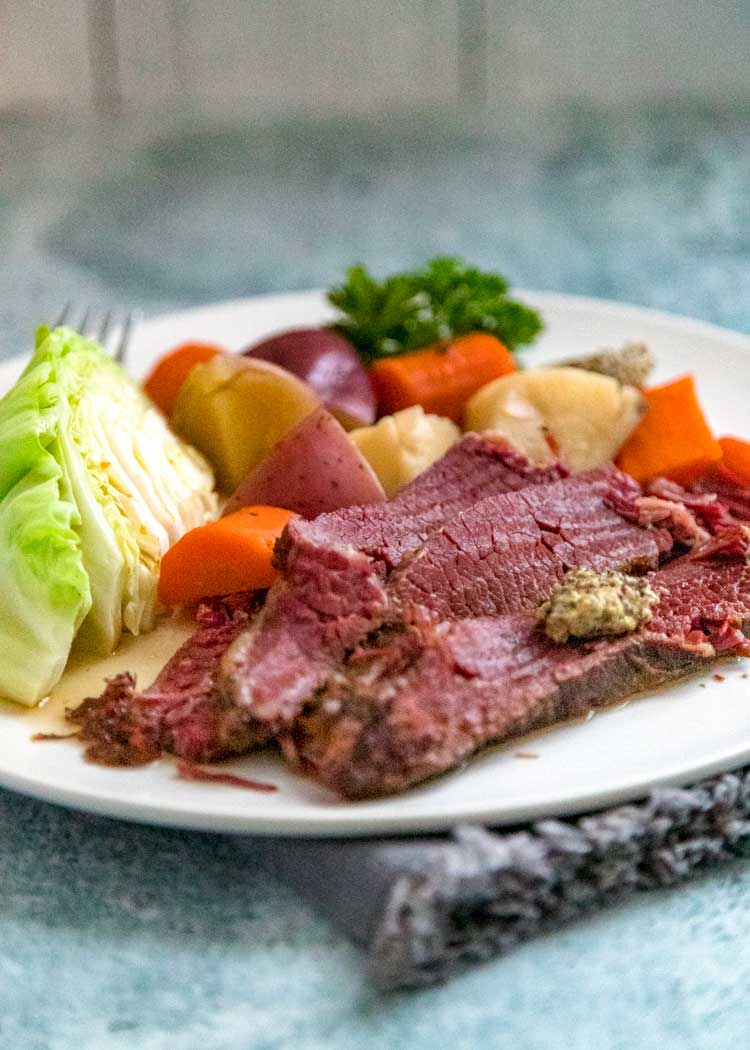
How to Cook Corned Beef in the Pressure Cooker?
I think the term pressure cooker brings back bad memories or scary stories of exploding kitchen pots, so with a rebranding of the kitchen cooking utensil, a more user friendly name is todays Instant Pot.
Pressure Cooker method: For a 5 pound brined corned beef brisket. Place corned beef on rack. Sprinkle with one tablespoon of pickling spice blend and pour in 4 cups beef broth or cover with water.
Lock the lid in place. Select High Pressure and set the timer for 90 minutes. Turn off the heat and allow to rest, sealed for 10 minutes, then uncover. Remove corned beef and cover with foil to keep warm. Add potatoes, carrots, and cabbage to liquid in pot. Seal with lid and set to HIGH pressure for 3 minutes. Do a Quick pressure release. Serve with corned beef sliced across the grain.
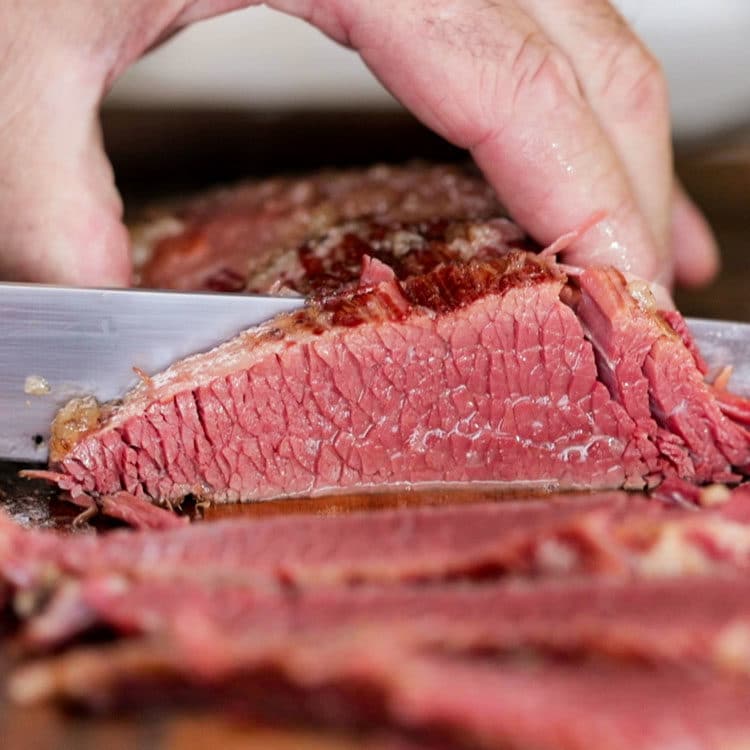
How to Cook Corned Beef in a Slow Cooker?
Slow Cooker method: For a 5 pound brined corned beef brisket, it needs to be cooked on Low, for about 8-10 hours OR on High for roughly 4-5 hours. Adding carrot and potatoes at the half time mark and add the cabbage in the last 2 hours. Corned beef and cabbage is a favorite of mine, although be sure not to over cook your cabbage.
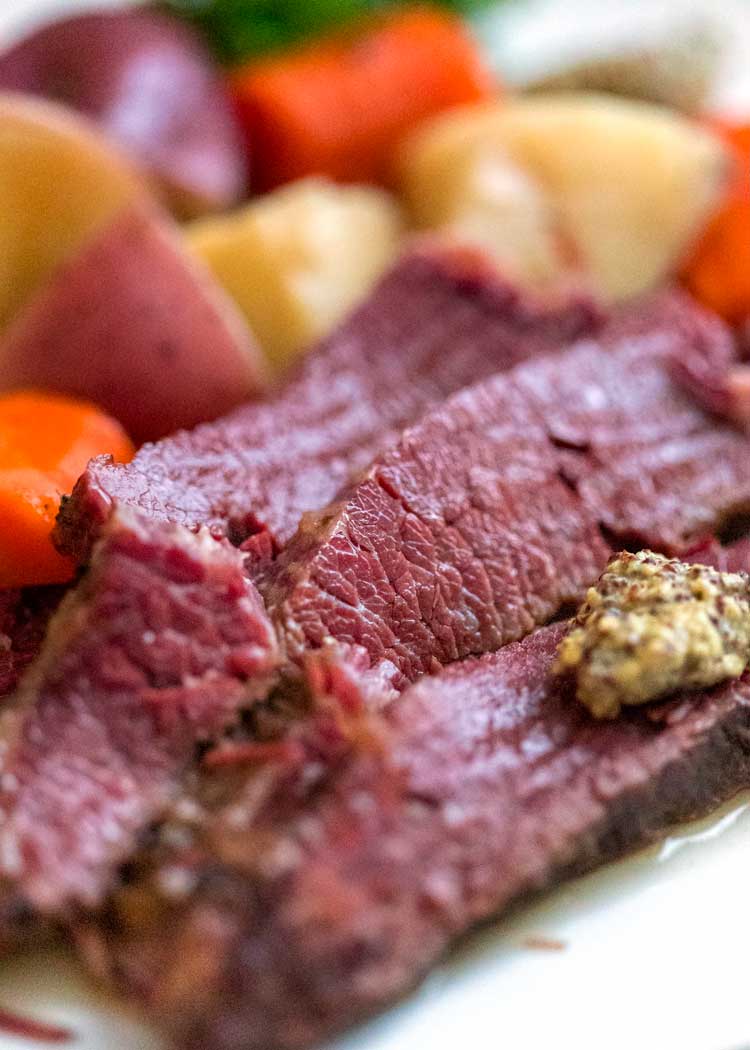
Just remember that when ready to serve, slice the brisket against the grain in 1/8 to 1/4″ slices. Cutting with the grain and you’ll have stringy beef jerky. No bueno. Cut ACROSS the grain. If you like this brisket recipe, try my How to Make Pastrami recipe, learn how to How to Make Smoked Brisket and this Braised Beef Brisket that’s amazing, too.
Check out my Homemade Whole Grain Mustard here. So, so good. I hope you learned How to Make Corned Beef and give this a try. Enjoy!
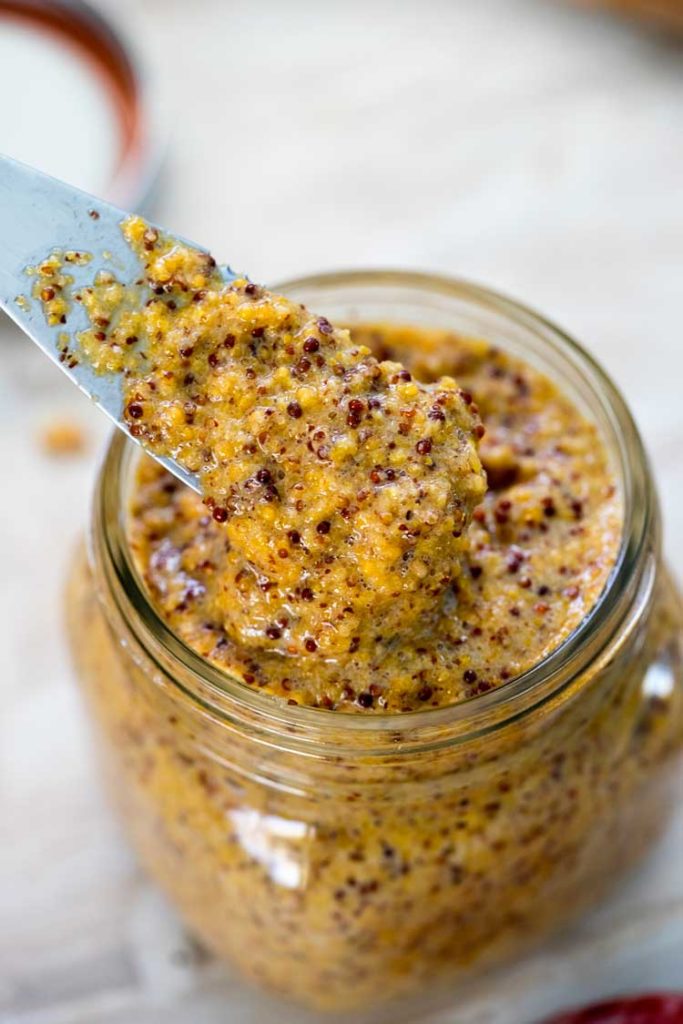
Subscribe to my Newsletter, follow me on Facebook, Pinterest, Instagram and YouTube for all my latest recipes and videos.
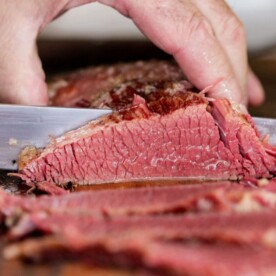
How to Make Corned Beef
Ingredients
Brine
- 4 quarts water (1 gallon)
- 1 cup kosher salt (See Note 1)
- 1/2 cup packed brown sugar
- 1/3 cup pickling spice blend
- 2 tsp pink curing salt (See Note 2)
- 4 garlic cloves minced
Cooking
- 5 lb beef brisket
- 4 cups water or beef broth
- 1 tbsp pickling spice blend
- 3 large carrots peeled and cut into 2″ pieces
- 1 lb small red potatoes cut in half
- 1 head green cabbage core removed and quartered
Instructions
To Make Brine
- In a Dutch oven or large stock pot add the water, kosher salt, brown sugar, pickling spice blend, pink curing salt, garlic and stir. Bring to a boil, lower to simmer and cook until salt and sugar have dissolved. Turn off heat and cool.
- In a large container or large sealable plastic bag place beef brisket. Pour cooled brining liquid over and cover or seal. Store in a refrigerator for 5-10 days, turning beef on day 5 (some feel 10 days is too much. Feel free to brine 5 days tuning it after day 3). On day 10 remove from brining liquid (discard liquid) and follow the directions to cook.
Cooking Methods
- Stovetop method:Place the corned beef in a Dutch oven or roasting pan. Sprinkle with one tablespoon of pickling spice blend and pour in 4 cups water or beef broth. Add potatoes, carrots, and cabbage. Bring to a boil on high heat. Reduce heat, cover (cover with foil if roasting pan) and cook for about 3 1/2 hours. Add water if necessary to keep brisket covered. You're looking for an internal temperature of 190-200°F. Place the corned beef on a cutting board, cover with foil, and let it rest at least 15-20 minutes. Slice ACROSS the grain.
- Oven Braised method:Preheat oven to 350°F. Place the corned beef in a Dutch oven or roasting pan. Sprinkle with one tablespoon of pickling spice blend and pour in 4 cups water or beef broth. Add potatoes, carrots, and cabbage. Bring to a boil on high heat. Cover (cover with foil if roasting pan) and cook in oven for about 3 1/2-4 hours. Add water if necessary to keep brisket covered. You're looking for an internal temperature of 190-200°F. Place the corned beef on a cutting board, cover with foil, and let it rest at least 15-20 minutes. Slice ACROSS the grain.
How to Cook Corned Beef in an Instant Pot?
- Place the corned beef brisket, fat side up, on a rack. Sprinkle with one tablespoon of pickling spice blend and pour in 4 cups water or beef broth. Lock the lid in place, close vent. Select High Pressure and set or 90 minutes, with a natural pressure release, NOT a quick pressure release.
- Remove corned beef and cover with foil to keep warm at least 15-20 minutes.
- Add potatoes, carrots, and cabbage to liquid in pot. Seal with lid and set to HIGH pressure for 3 minutes. Do a Quick pressure release. Serve with corned beef sliced ACROSS the grain.
How to Cook Corned Beef in a Slow Cooker?
- For a 5 pound corned beef brisket, it needs to be cooked on Low, for about 8-10 hours OR on High for roughly 4-5 hours. Sprinkle with one tablespoon of pickling spice blend and pour in 4 cups water or beef broth. Adding carrot and potatoes at the half time mark and add the cabbage in the last 2 hours.
- Remove corned beef and cover with foil to keep warm at least 15-20 minutes.
- Just remember that when ready to serve, slice the brisket against the grain in 1/8 to 1/4" slices. Cutting with the grain and you'll have stringy beef jerky. No bueno. Cut ACROSS the grain!
Video
Notes
- Kosher salt is what I use and what I used to use from when working in the food industry, namely for its coarse, uniform, easy-to-pinch granules. It’s most often used in restaurant kitchens and catering. Kosher salt has much lighter, flakier crystals than table salt, but if you allow the salt to dissolve in the food, there really isn’t any difference compared to regular table salt. However, kosher salt is less likely to contain additives like anti-caking agents and iodine. Per Epicurious: It’s industrially produced by boiling off brine that’s pumped in and back out of a salt deposit. It is not kosher-certified; the name refers to how the salt crystals draw out moisture in the meat koshering process.
- A key ingredient in the “corning” process is using pink curing salt. I’m not talking Himalayan pink salt either! Pink curing salt is made using sodium nitrite that prevents food from going bad and spoiling while it’s being stored for a time. It’s also known as Prague powder #1, which is a combination of 6.25% sodium nitrite and 93.75% salt (sodium chloride) and usually some anti caking agents as well as pink dye. It’s also known as Pink curing salt is made using sodium nitrite that prevents food from going bad and spoiling while it’s being stored for a time. It’s also known as DQ Curing Salt #1, and is available online or at your local specialty market or butcher shop.
Curing salt is dyed that pink color so it’s not mistaken for everyday white table salt. If you don’t have it, you can still make corned beef, but it is necessary for that vibrant pink color we associate with corned beef. If you don’t have or don’t want to use curing salt containing sodium nitrite, you can brine meats without it. “Without curing salt that contains sodium nitrite, the color of the cured meat will be gray rather than pink and the flavor is less sweet with a more pronounced “pickle” flavor.” Source: Home Preserving Bible site. - If you prefer, there is a product made by Morton called Tender Quick. Tender Quick is a fast-cure mix so you can cure meats, poultry or game. It gives meats a tasty, cured flavor and that characteristic pink color. Simply omit the kosher salt and pink curing salt from my Brine recipe above and use 250g or 1 cup of Tender Quick in lieu of those two. Mix with remaining brine ingredients and follow the recipe. Morton Tender Quick mix contains salt, the main preserving agent; sugar, both sodium nitrate and sodium nitrite, curing agents that also contribute to development of color and flavor; and propylene glycol to keep the mixture uniform.
Nutrition
The information shown is an estimate provided by an online nutrition calculator. It should not be considered a substitute for a professional nutritionist’s advice.
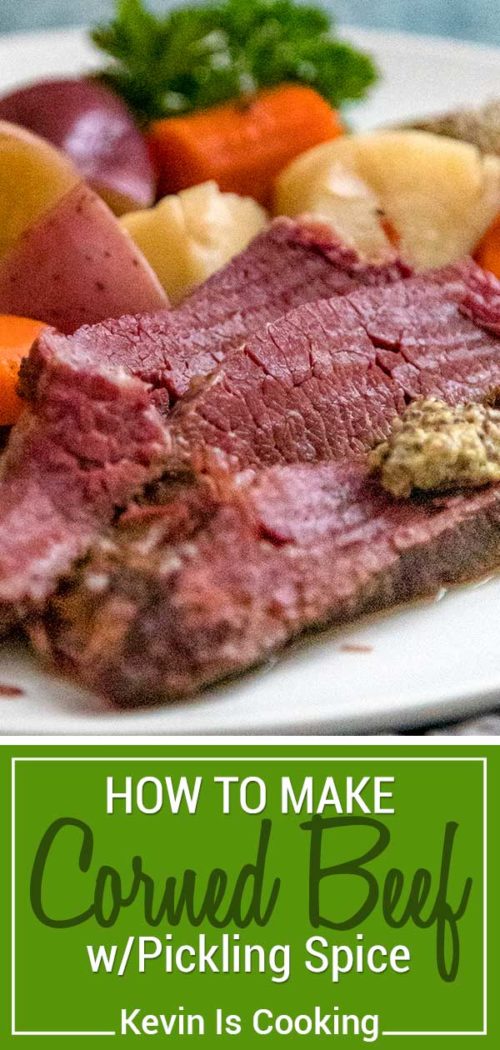
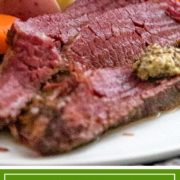
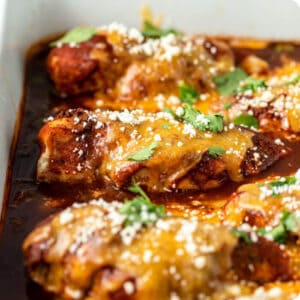
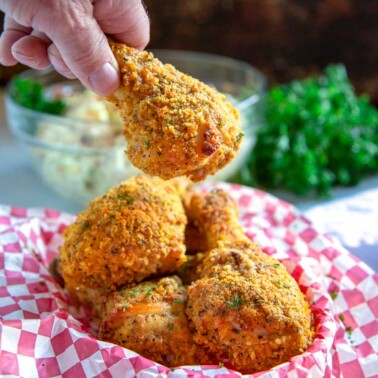
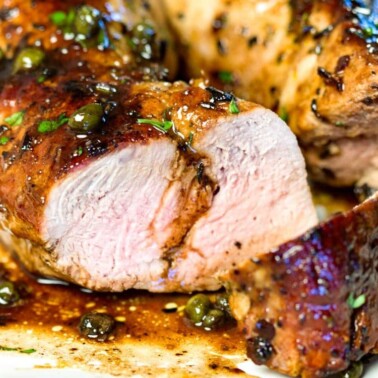
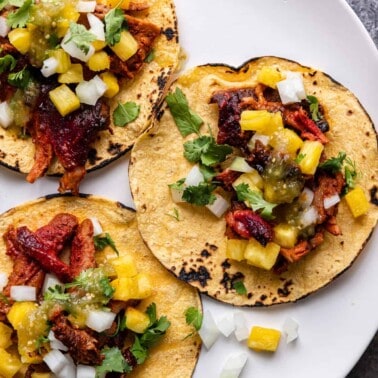
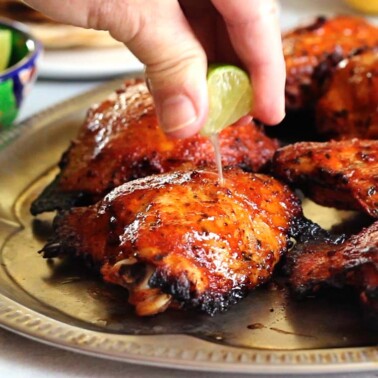












I’m sooo happy to see that someone else cures their own!!! Bravo!!!
A home corned beef is so much better than a store bought package.
Outstanding results! Thanks Tracy.
I made this recipe and it was a real hit! Loved it.
Fantastic, thanks so much Renee. 🙂
Great article, thanks a lot, Kevin! Question for you: if I’m making this corned beef to primarily slice up for reuben sandwiches, do you still finish cooking with the potatoes, carrots, and cabbage? Are those to impart the finishing flavors to the beef, or are those more for having a corned beef and cabbage meal afterwards?
No need to add them if just making for sandwiches Eric.
What would be the cooking instructions if I am using a Pressure Cooker? Is it same as Slow Cooker or Instant Pot?
The Instant Pot is basically the alternative for you Joe. Enjoy!